I have a custom class that extends NSObject and implements the MKOverlay protocol. As a result, I need to implement the protocol's boundingMapRect property which is an MKMapRect. To create an MKMapRect I can of course use MKMapRectMake to make one. However, I don't know how to create an MKMapRect using that data I have which is two points, each specified by a latitude and longitude. MKMapRectMake's docs state:
MKMapRect MKMapRectMake(
double x,
double y,
double width,
double height
);
Parameters
x
The point along the east-west axis of the map projection to use for the origin.
y
The point along the north-south axis of the map projection to use for the origin.
width
The width of the rectangle (measured using map points).
height
The height of the rectangle (measured using map points).
Return Value
A map rectangle with the specified values.
The latitude and longitude values I have to spec out the MKMapRect are:
24.7433195, -124.7844079
49.3457868, -66.9513812
The target MKMapRect would therefore need to spec out an area that looks about like this: 
So, to reiterate, how do I use my lat/lon values to create an MKMapRect that I can set as MKOverlay protocol's @property (nonatomic, readonly) MKMapRect boundingMapRect property?